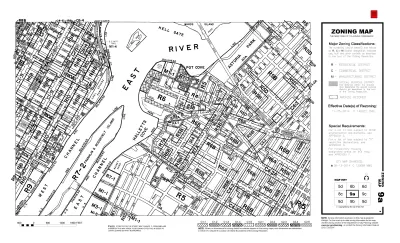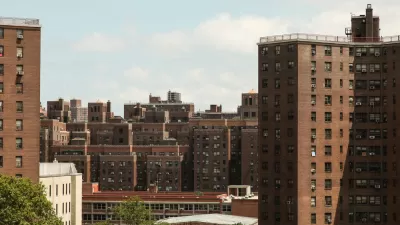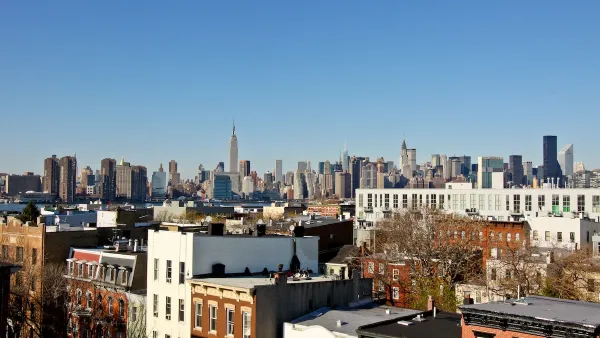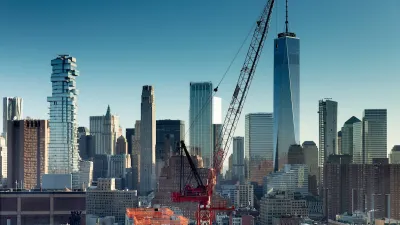According to Seymour Toll's 1969 book, New York City's 1916 zoning code was less a civic-minded project than an attempt to protect elite retail districts from the riff-raff. The ramifications for American zoning at large are significant.

For a short time during the late 1960s, Jake Blumgart writes, "zoning received the attention it deserved as a monumental force shaping the character of many American communities—in large part due to civil rights protests over its exclusionary effects in newer suburbs." Today, renewed debate about urban segregation has cast zoning into the spotlight once again.
In his 1969 book Zoned American, Seymour Toll gives us "an in-depth history of the 1916 New York code, the progenitor of zoning codes nationwide, and the impetus for its creation. The received history of zoning often frames it as a creation of Progressive-era good government planners. But Zoned American shows that the code was actually created as a weapon to defend the narrow self-interest of a small group of prestigious merchants."
In a move that presages problematic zoning later in the century, "wealthy retailers based along Fifth Avenue were the advance guard of zoning in New York. Dubbed the Fifth Avenue Association, they believed their investments would be compromised by the northward advance of the garment industry and the hordes of foreign born workers that accompanied it."
The zoning that emerged from these conditions had specific and recognizable prejudices. It sought to constrain density and height, separating uses to preserve "the northern stretch of Fifth Avenue—and Manhattan more generally—for businesses that catered to the wealthy."
Stephen Smith, well-known as the voice behind @MarketUrbanism on Twitter, remarked, '"There wasn't some grand plan, zoning was taking whatever was there and freezing it [...] Toll convinced me it wasn't really planning, it was just reacting to whatever was already built.'"
FULL STORY: Learning from 'Zoned American'

Planetizen Federal Action Tracker
A weekly monitor of how Trump’s orders and actions are impacting planners and planning in America.

Maui's Vacation Rental Debate Turns Ugly
Verbal attacks, misinformation campaigns and fistfights plague a high-stakes debate to convert thousands of vacation rentals into long-term housing.

San Francisco Suspends Traffic Calming Amidst Record Deaths
Citing “a challenging fiscal landscape,” the city will cease the program on the heels of 42 traffic deaths, including 24 pedestrians.

Defunct Pittsburgh Power Plant to Become Residential Tower
A decommissioned steam heat plant will be redeveloped into almost 100 affordable housing units.

Trump Prompts Restructuring of Transportation Research Board in “Unprecedented Overreach”
The TRB has eliminated more than half of its committees including those focused on climate, equity, and cities.

Amtrak Rolls Out New Orleans to Alabama “Mardi Gras” Train
The new service will operate morning and evening departures between Mobile and New Orleans.
Urban Design for Planners 1: Software Tools
This six-course series explores essential urban design concepts using open source software and equips planners with the tools they need to participate fully in the urban design process.
Planning for Universal Design
Learn the tools for implementing Universal Design in planning regulations.
Heyer Gruel & Associates PA
JM Goldson LLC
Custer County Colorado
City of Camden Redevelopment Agency
City of Astoria
Transportation Research & Education Center (TREC) at Portland State University
Jefferson Parish Government
Camden Redevelopment Agency
City of Claremont





























